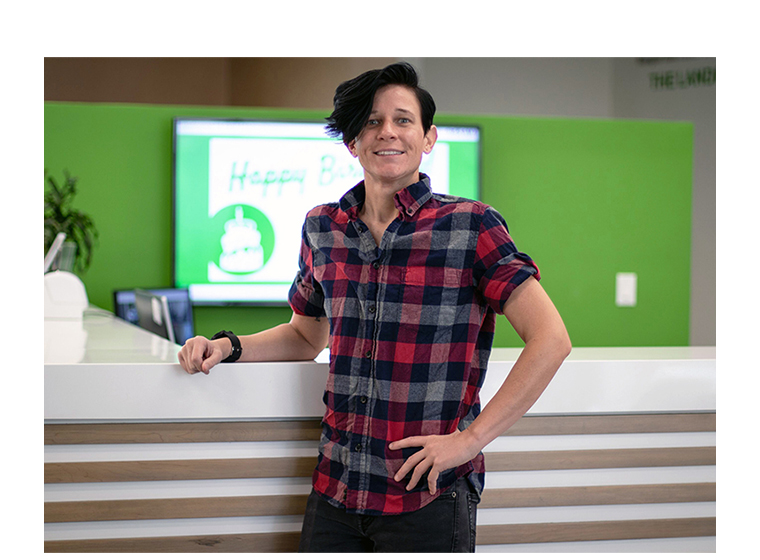Jena McCoy is a Transition Specialist with Southwest Autism Research & Resource Center (SARRC). She works with First Place Transition Academy, operated by SARRC, a structured two-year program in the supportive environment of First Place–Phoenix that helps build crucial skills to support self-sufficiency. The program is designed to maximize students’ capacity to live more independently through its curriculum and individualized services designed for adults with autism.
“My main responsibilities are to support students and families as they enter the program, support student’s development of their transition plans, and facilitate their transition out of the Academy once they graduate,” Jena says.
This includes supporting the interview processes of prospective students, as well as developing and creating meaningful, goal-oriented timelines and supporting materials for a student’s transition while enrolled in the 2-year program. Jena also accommodates any needs to ensure the student’s success, as well as their transition out, which could include housing or wrap-around support services for when they graduate.
We caught up with Jena to get a peek into one of her typical days:
9 a.m.: I arrive at work and start my day by making sure there aren’t any urgent messages that have come in during the evening, and to see if there’s anything I need to prioritize first thing in the day.
9:30 a.m.: I spend a good part of my day meeting with students and their transition team— including family members, the supervisor on their case, therapists, and instructors. Those meetings are typically one hour each.
The focus of the meeting is to support the student to plan their next steps after they graduate from the program. We talk about the progress the student is making daily on their goals, but ultimately we talk about what is going to happen when that student leaves the program in terms of housing, roommates, and support services. I facilitate a discussion and the student talks about the tasks that they have completed to prepare themselves to graduate from the program, and we work together as a team to support students to identify what steps they could take next.
1 p.m.: In the early afternoon, I typically have meetings with staff members. Sometimes I meet with therapists and work on tasks that help them learn and develop their skills. Other times I meet with my supervisor, the team at First Place, and our administrative staff to develop and plan for our incoming students, as well as our students who are moving from their first year of the program to the second year. With First Place, we work together to monitor and track where applicants are in the process of applying for the program.
For our freshmen who are moving to their sophomore year, we communicate about the timeline of their move, what needs to be completed before they move (i.e. maintenance, cleaning, and preparing for their move), and we support students to identify their next roommates for their second year. In addition to this, we all work together to plan orientation for our incoming class including when they will move in, what meetings will need to be completed during this time, and what events will be held. There are a lot of moving parts between the property management side (which First Place manages) and the clinical side (which SARRC is responsible for), so we need to make sure we are all in good communication with each other.
2 p.m.: In the later afternoon, I typically work on developing materials, and catching up on my e-mails or messages. Right now, I am working on developing a timeline and supporting materials for students outlining their two-year transition process. I am also working on developing materials, and gathering resources to share with families that make for an easier transition, or for a better understanding of transition-related topics. These topics include what options may be out there for services after the program, what types of housing are out there, and what will fit the student’s needs best, even down to how to find roommates safely.
3 p.m.: Later in the day, I typically resume transition meetings with our students, or join in on student sessions with their therapists to help facilitate and support the completion of their transition tasks, or to help problem solve any barriers that they are running in to. This is a time where I might also connect to families to ensure their child’s plans are aligning with the resources that parents have to support the next steps in their child’s road to living a self-sufficient, self-determined life after their time at the Transition Academy.
4:30 p.m.: I typically wrap up my day by responding to any emails that came in during the day, sending out invites to upcoming meetings, and making sure that I’m prepped for my next day.
Careers at SARRC
Whether you have experience, or you’re just getting started, explore the many different career opportunities at SARRC today! Learn more…

